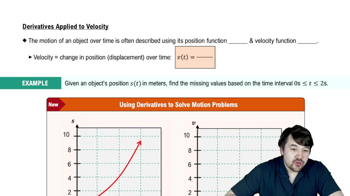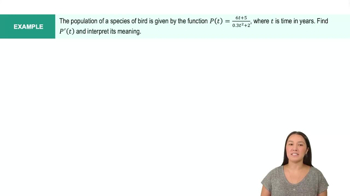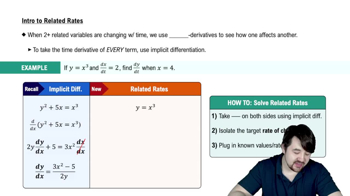Derivatives Find the derivative of the following functions. See Example 2 of Section 3.2 for the derivative of √x.
g(x) = 6x⁵ - 5/2 x² + x + 5
 Verified step by step guidance
Verified step by step guidance Verified video answer for a similar problem:
Verified video answer for a similar problem:



 3:59m
3:59mMaster Derivatives of Linear Functions with a bite sized video explanation from Patrick
Start learning